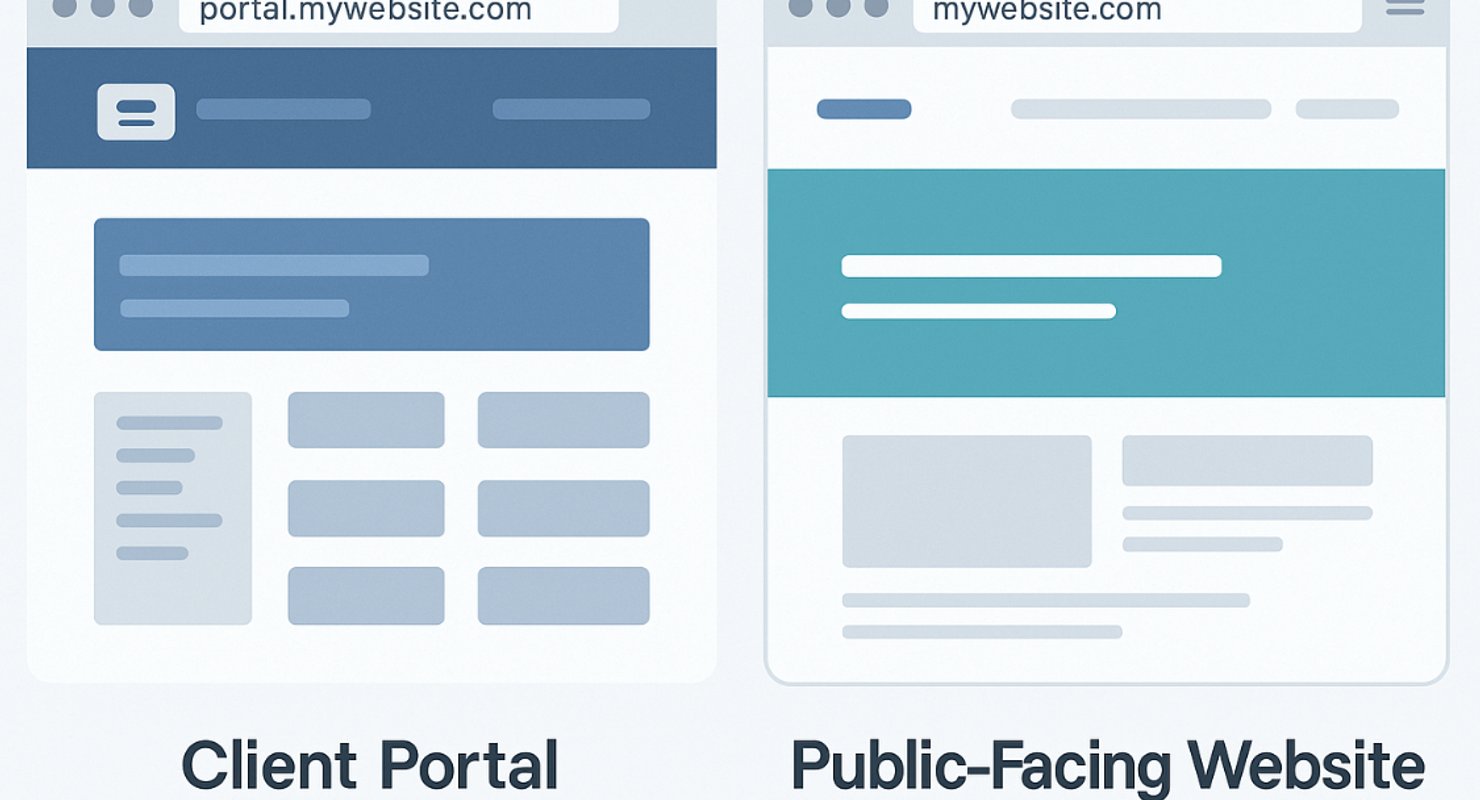What Is a Subdomain and Why You Might Need One
Not every website needs a subdomain, but if you have some sort of digital portal or software where your clients need to login, you should put this on a subdomain. But why's that? First things first...
What is a subdomain?
A subdomain is a way of creating a separate section of your website that still sits under your main domain. So instead of building a whole new site with a new name, you can keep everything under your existing web address but give it its own space. Think of it like adding an extension to your house, rather than buying a second one. Everyone uses the main house to learn about you, but for those people that also need something else, they go to your extension.
The format of a subdomain is very simple too. Let's say your domain is mywebsite.com, and you're creating a client portal, your subdomain might be portal.mywebsite.com.
Who actually needs one?
Most businesses won't need a subdomain, simply because their clients won't need to login to anything for project updates or to access the services you offer. There are cases though where businesses have an admin site or customer portal, some examples include:
- Software companies having their admin site for users to login
- Recruitment agencies or job boards allowing applicants to track their progress through a portal
- Service providers having a portal for clients to get updates on how a project is going (we have one!)
- Finance companies, insurance companies and other similar companies having an area for clients and customers to login.
- A separate section for partners or internal tools
Some service-based businesses also sell products on the side. In that case, putting the shop on shop.mywebsite.com can keep things clean and tidy.
Just to be clear, if you are only running a standard online store where your business only sells products, like a typical ecommerce brand, a subdomain is usually not needed, your shop will be on your main domain.
Why are subdomains needed?
The big one is speed.
If you try to cram everything into one site, things can slow down due to the amount of code and scripts a portal, admin site or eCommerce store need. Subdomains help keep the main website fast and focused by separating out the stuff that only paying customers need to access. A lighter main site means quicker load times and a better experience for visitors.
They also make things easier to manage. You can track performance separately, make updates without breaking the whole site, and work more flexibly with your developer.
Considerations
Before jumping into using a subdomain, it’s worth thinking through a few practical points.
- Consistency - If your users expect to find everything under one roof, suddenly being taken to a subdomain can feel jarring. Make sure branding and design stay consistent across all sections and that it is easy to access your subdomain.
- SEO implications - Search engines treat subdomains slightly differently to subdirectories. It’s not necessarily bad, but you’ll want to make sure your content strategy accounts for it, and you'll probably want to block the subdomain from indexing on search engines.
- Management overhead - Subdomains often require separate hosting setups, SSL certificates, and performance monitoring. If you’re managing everything yourself, this can mean extra complexity.
- Analytics tracking - You’ll need to configure your analytics tools correctly to get a clear picture of how users move between your main site and your subdomain. Otherwise, it can look like they’re leaving your site completely.
If you’re unsure whether a subdomain is right for your setup it may be worth consulting your developer, or getting in touch with us.
In short
Subdomains are a brilliant solution when you have different types of users or tools that need their own space. You do not need one if your website is simple, but they are a smart move for more complex setups.







